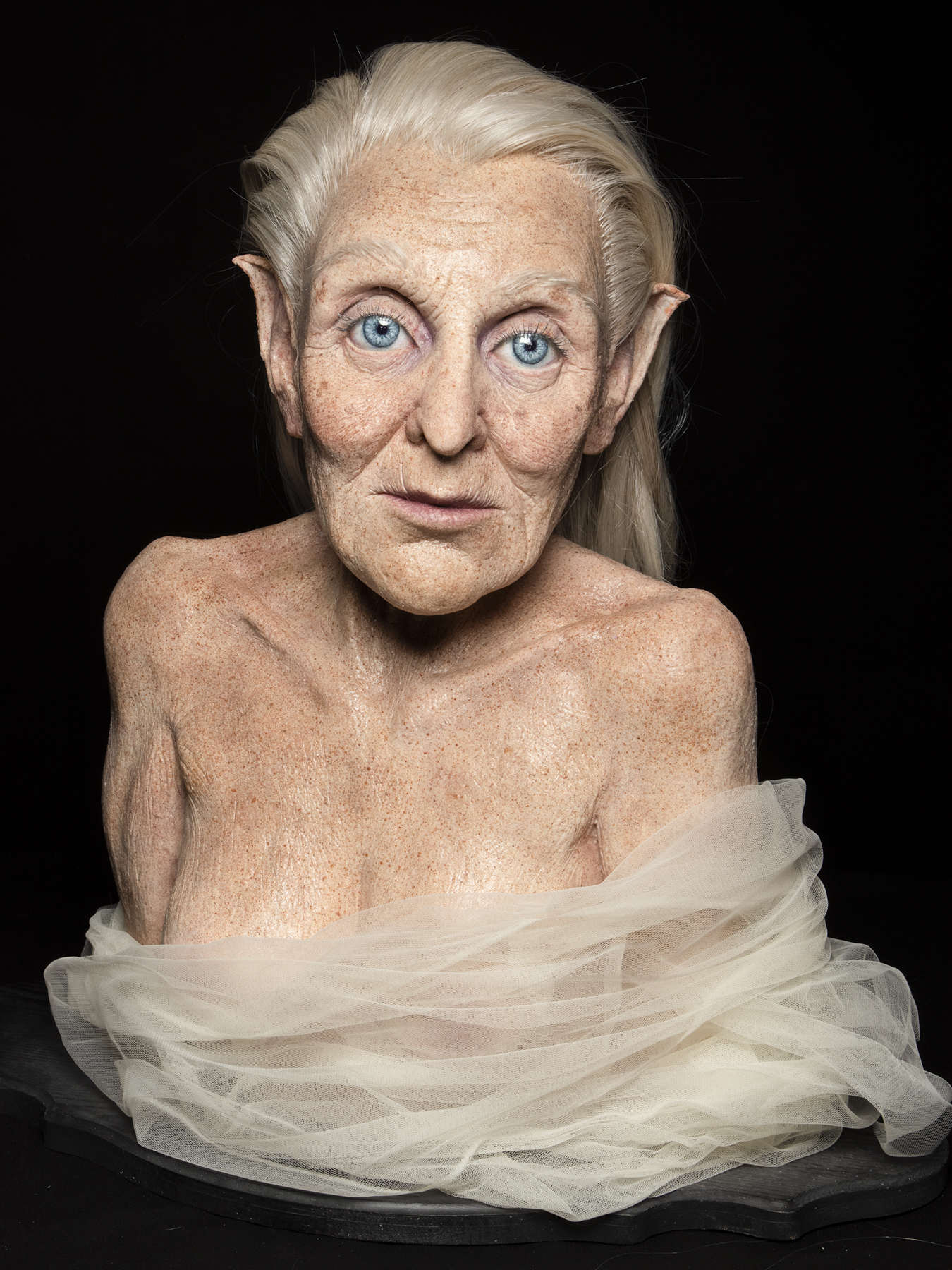
Are you tired of the daily grind? Are you looking for a rewarding and exciting outlet to direct your creativity? Do you enjoy watching movies and playing video games? If your answer to any of these questions is a resounding “Yes!”, you’re likely due for a career change. Coming to that conclusion might have been simple, but it can become trickier if you don’t know how to begin your journey or what skills this journey may require.
Both the movie, television, and gaming industries are exploding and in constant need of top tier talent when it comes to creating the various characters that appear on screen. If this seems like it could be your calling, you may be wondering what you’ll need to do to make it happen— hopefully this article will help to answer some of those questions.
What skills do I need and how do I acquire them?
First and foremost you need to be creative. You need to have the ability to develop characters and creatures that don’t exist anywhere but in your mind, and bring to life a being that is both believable and evokes the desired emotion. Creativity aside, there are a number of technical skills you’ll need to master. Additional soft skills include:
- Problem-solving;
- Critical thinking;
- Communication skills;
- Collaborative;
- Adaptable to changing situations and environments.
For example, you’ll need to know how to properly interpret a customer’s brief. Since potential clients will have an idea of what they want to appear on screen, they’ll generally provide you with detailed information about the creature you’ll be working on. Strong attention to detail is vital for picking out important characteristics that need to be present in the final output. If the brief’s description is scant in detail, you need to know what questions to ask in order to be able to flush out the desired character in a timely manner.
Having a background in traditional art will certainly help since even the most exotic creatures tend to reference the physical characteristics of real creatures. Having a good understanding of how to use reference images in your creation will help lend credibility to your final design.
Of course, modern technology plays an important role in creature and character design, so you’ll need to gain experience with some of the industry’s most cutting edge tools. Chief among them is ZBrush, a digital sculpting software. In all likelihood, you won’t have experience with these sophisticated tools, and purchasing them and learning them on your own can be a costly and lengthy process. For these reasons, the best way to access and learn about these tools is to enroll in a Creature Design Program that’s staffed with qualified and industry-experienced teachers.
What do creature/character designers actually do?
From the outside looking in, a creature or character designer seems like a pretty straightforward gig. However, character designers are typically brought in to help design creatures or characters that are exceedingly complex, and they must be able to draw upon a number of their skills in order to create a well-rounded and believable character.
The process itself is one that requires a fair bit of collaboration: rough sketches must be reviewed and altered to meet the brief, storyboards must be created and presented to flush out the character, and 3D modeling techniques must be used to add the right texture and colours and mobility. A designer’s job is only finished when the overall project is done, as they must be available to alter the creature design as needed as the project itself evolves.
Does a creature and/or character designer need to know how to draw?
This is a question the answer to which is constantly changing. While having a strong background in drawing certainly doesn’t hurt, such a skill is increasingly becoming less of a requirement. Most of the work pertaining to character development is done using computers, so having the ability to draw well is not quite as necessary as it once was. Having said that, the industry is full of individual artists who have spent time studying muscle groups and how the human body moves, so having the ability to draw is certainly a plus.
Do I have to be good at math to be a successful creature/character designer?
The short answer is: it depends. Yes, math will certainly come into play as a videogame designer. Statistics, linear algebra, and geometry are must-have knowledge in order to create a realistic environment. Mathematical modeling is necessary for taking simple geometric shapes and turning them into complicated forms. Remember, even if you didn’t fare so well in high school math class or didn’t take any math courses at the post-secondary level, it doesn’t mean that you can’t learn it now. There are plenty of online or in-class courses and tutorials that can help you learn the basics.
What are some of the other things I should know?
Be open to developing new skills. If you don’t possess strong drawing skills, start by practicing two-dimensional drawings before progressing to 3D modeling. Resign yourself to learning the entire process. It might be tempting to throw all your energy into becoming proficient in one particular area of the creature and character design, but honing your skills in such a way can be detrimental to your chances of getting hired. Creature and character design should not be seen as a “quick way to change careers”. Consider the time and practice it takes to become a well-rounded designer as an investment in your future, the way you would if you were pursuing any other kind of education.
How can I improve my creature design drawing skills?
The obvious answer is you’ll need to practice. Each time you draw something, you’ll improve your skills as an artist. Take some time to look at what other artists have produced, from simple line work to high-quality rendering. Study the way they used colour and shadow to bring their images to life.
Try your hand at recreating the work of established artists (not to pass off as your own, but rather as a way to pick up some of their best practices). You’d be surprised what you can learn from duplicating a drawing.
Challenge yourself by drawing from a photograph. Mimicking a two-dimensional drawing is infinitely simpler than drawing from real life. You’ll learn a lot about edges, shapes and angles, especially if you don’t trace.
Take a drawing class. If you haven’t had the opportunity to learn from a professional artist, you’re doing yourself a disservice by not enrolling. For a very modest sum, you can benefit from years of professional study in the very medium you’re looking to excel in. There are likely more options in your area than you realize, ranging from an informal artist sketch session to a YMCA clinic, to a university course.
Researching the school and courses before enrolling
Once you’ve considered everything else and decided that your pursuit into character and creature design is one you’re serious about, it’s time to figure out where you’ll learn the bulk of the skills you’ll need to turn your dream into a reality. As someone new to the field, it can be difficult to vet the various schools and programs. If you’ve got a limited budget, you’ll want to ensure that the program you enroll into is one that will provide you with the most value for your money.
There are a number of excellent choices in Canada, with each one uniquely positioned to help you develop your skills. Eager as you might be to get started, it’s best to familiarize yourself with the different opportunities in your area. A specialized institution, such as the CMU College of Makeup & Art Design offers targeted course material on a truncated timetable, so you can tailor your schedule to your needs. Regardless of where you choose to go, there are five things you should remember when applying to art colleges:
1. Research the school, the courses they offer, tuition rates, teachers with industry experience, etc.
2. Apply to more than one college just in case you aren’t accepted into your first choice.
3. Put together a portfolio of your work to showcase. This is generally a mandatory submission when applying to art college. If you don’t have one, consider developing a quality portfolio before you think about submitting applications.
4. Do your best to prepare for interviews. Visit forums or, if you know someone enrolled or previously enrolled in art college, ask them to give you some insight as to what sort of questions you can expect to be asked.
5. Do not limit yourself to local institutions or discount remote opportunities.
Trying to break into character and creature design will not be easy. It will take a considerable amount of work and commitment on your part, especially if you’ve decided to change careers. Hopefully, this article has provided you with just enough information to help you take your first steps towards a new career full of exciting and unique opportunities.




